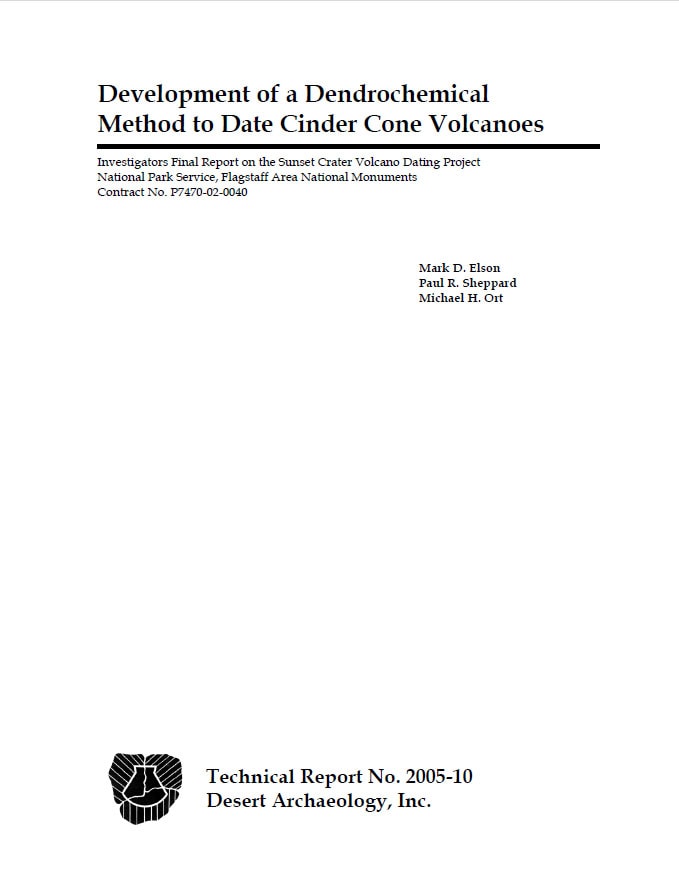Description
Development of a Dendrochemical Method to Date Cinder Cone Volcanoes (TR2005-10) (PDF)
Understanding the full range of interactions between human groups and volcanic eruptions is of great importance, not only for predicting volcanic hazards and potentially saving lives, but also for insights into human behavior and specifically, on the ways in which populations adapt to catastrophic events. However, most accounts of human/volcano interaction are confined to the past few hundred years, thereby limiting the number of cases and the formulation of predictive models. In this multidisciplinary study, partially supported by a grant from the National Park Service, Flagstaff Area Monuments, we develop methods using a combination of dendrochronology and geochemistry that will enable the dating of prehistoric and unrecorded historic period eruptions with a high degree of both accuracy and precision. Dates derived from our methods can then be combined with the archaeological record or with historic documentation to investigate and model the ways in which human groups interact with volcano eruptions.
Preliminary geochemical data gathered from trees affected by the eruption of Parícutin Volcano in Michoacán, Mexico, show changes in the chemical signatures in phosphorus and perhaps in calcium and strontium during the known historic Parícutin eruption. Significantly, some of these same signatures show up in the mid-11th century A.D. in our preliminary investigation of wood from prehistoric structures in the Sunset Crater vicinity. These data were used as a pilot study in our successful request for funding from the National Science Foundation (Earth Sciences Division). The procurement of this grant will enable us to increase the sample size and replicate these findings before they are used widely in other volcanological settings and in the re-interpretation of prehistoric adaptations to the Sunset Crater eruption.
